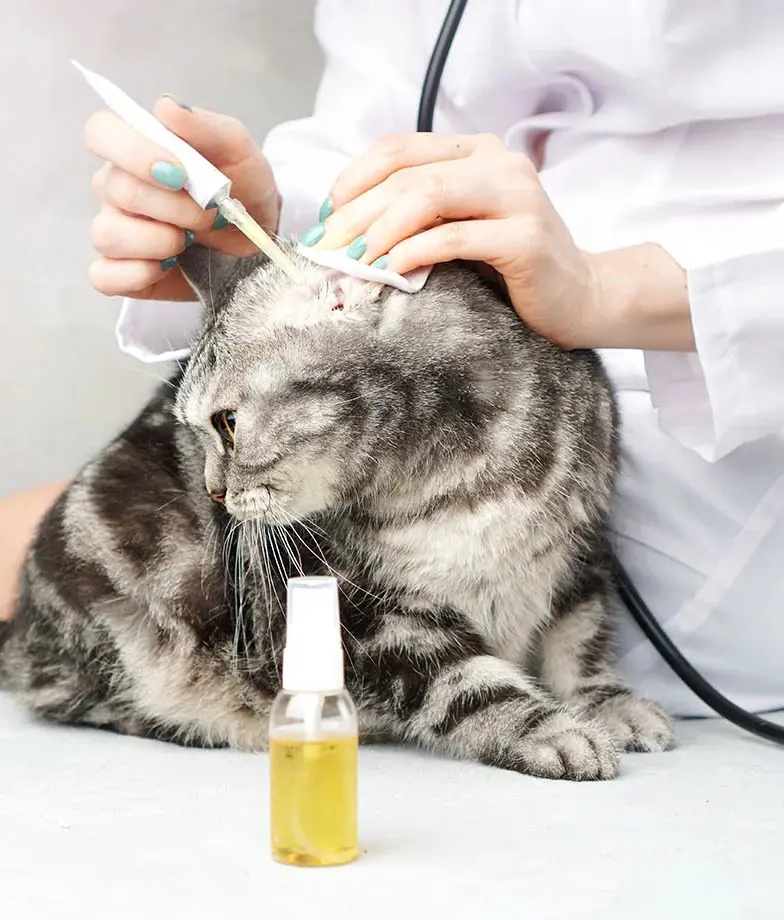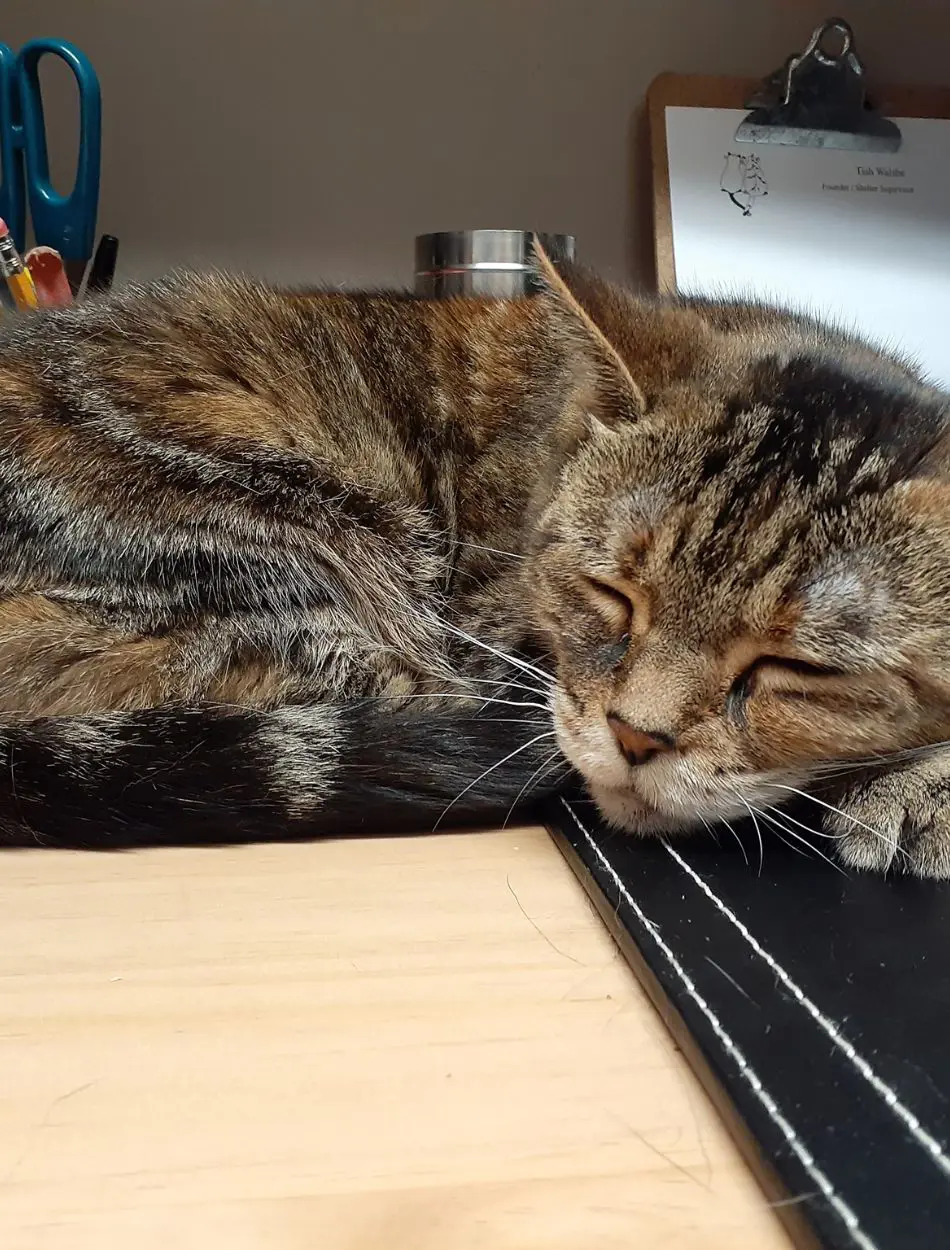15 Ways To Spot Ticks On Cats

Spotting ticks on cats is crucial, as these tiny parasites can transmit serious diseases to your feline friend. Regular checks and prompt removal can help protect your cat's health and prevent infestations.
Once attached, ticks feed on the cat’s blood, potentially transmitting diseases like Lyme disease or cytauxzoonosis. To keep cats free of ticks, carefully monitor your cat's behavior and check for signs for infections. Here are some common symptoms of ticks on cats and methods of treatment.
1. Visual Inspection
Identifying tick infestations in cats through visual media is one of the most effective ways of spotting ticks. By carefully examining areas where ticks commonly attach, owners can spot these parasites before they can cause serious harm. Ticks are often small and resemble tiny dark spots or bumps on the skin, especially when engorged with blood.
A thorough visual inspection can reveal adult ticks and nymphs, which are smaller and harder to detect. Early identification through visual inspection helps prevent tick-borne diseases, such as Lyme disease or feline cytauxzoonosis, by allowing for immediate removal and reducing the risk of transmission. Regularly inspect your cat, especially after outdoor activities.
2. Feel for Bumps
Ticks cause bumps on a cat’s skin when they attach and embed their mouthparts into the skin to feed on the cat’s blood. This feeding process can lead to localized irritation, inflammation, and an allergic reaction, causing small, hard bumps or raised areas to form around the tick’s attachment site.
These bumps are often the first visible sign of a tick bite and can persist even after the tick is removed due to the body’s inflammatory response. Use a calm, gentle approach to check for these bumps without stressing the cat.
Gently run your fingers over the cat's body in a soothing manner, feeling for any small, hard lumps. Focus on areas where ticks are commonly found, such as the neck, ears, and between the toes. Providing treats or engaging in calming petting sessions during the inspection can also help keep the cat relaxed and reduce anxiety.
3. Check Around the Ears
A cat’s ears are considered to be a highly vulnerable spot for tick infestations due to their warmth, thin skin, and ample blood supply. The folds and crevices of a cat's ears provide ticks with a secluded environment where they can latch on and feed undisturbed.
Ticks are drawn to the ears as they offer easy access to blood vessels, while also keeping them from being easily noticed by the cat. These felines often require human assistance in dealing with the ticks occupying their ears.
Fold back the ear flaps and inspect both the outer and inner surfaces, especially around the edges and base. Use a flashlight to illuminate the ear canal and look for ticks hiding deeper within. Speaking softly helps in keeping the cat calm during the examination.
4. Examine Between Toes

Inspecting a cat's toes for ticks involves a careful and methodical approach due to the sensitive and narrow spaces between the toes. Ticks often hide in these areas because they provide a warm, protected environment with thin skin that is easy for ticks to penetrate.
Gently hold your cat’s paw and spread each toe apart. Use your fingers to feel for any bumps that could indicate a tick or its bite. If you spot a tick, it’s important to remove it immediately using tweezers or a tick-removal tool to avoid leaving parts behind.
5. Inspect Under the Collar
If your cat wears a collar, chances are that's where the tick is hiding. Ticks are known to prefer this spot as it provides them with a warm and moist environment.
The collar area is often less accessible to the cat's grooming and scratching allowing ticks to latch on and feed undisturbed. Additionally, the collar may create a shaded spot that protects ticks from sunlight and dehydration.
To keep your cat’s collar tick-free, regularly remove the collar and inspect both the collar itself and the area beneath it. Wash the collar frequently with hot, soapy water or use a tick-repellent spray safe for cats. You should also consider using tick-preventive collars specifically designed to repel ticks.
6. Check Around the Eyes
Tick infestations around the eye region of a cat are particularly concerning due to the sensitivity and delicate nature of the area. Ticks can attach to the thin skin around the eyelids or even on the conjunctiva.
The constant movement and blinking can further aggravate the site, increasing the risk of inflammation and damage to the eye itself. In severe cases, ticks can transmit diseases that may affect the cat’s vision or overall health.
Removing ticks from the eye area requires extreme caution to avoid harming the cat. It is best to use the help of a professional and not try it yourself as a minor mistake can cost the cat its eyes.
7. Look for Black or Brown Spots
Black or brown spots on a cat's skin or fur are a common sign of a tick infestation. Ticks, especially when small or in the nymph stage, may appear as tiny dark spots against the cat’s skin. As ticks feed and become engorged with blood, they can change color from a lighter brown to a darker shade that resembles small black or brown spots.
These spots can be easily overlooked as they often get mistaken for dirt or skin debris. Regular inspection is crucial to distinguish between harmless dirt and actual ticks. Examine any suspicious spots to see if they have legs or are attached to the skin. Early detection and removal of these ticks are essential to prevent them from transmitting diseases.
8. Feel the Base of the Tail

The base of a cat's tail is an easy spot for ticks to attach; it is a hidden area that protects from grooming and scratching. This location offers a stable environment where ticks can feed undisturbed, as the skin here is often less exposed and the cat has limited mobility to reach it effectively.
Cats have difficulty reaching the base of their tail during grooming due to its location. While they can clean most of their body, removing ticks from this spot is challenging without human assistance. Owners should regularly check the tail base and remove any ticks using tweezers or a tick-removal tool.
9. Use a Magnifying Glass
As tiny pests, ticks usually avoid detection due to their small size. That's where a magnifying glass becomes handy. By magnifying the view of the cat's skin and fur, this tool helps in spotting tiny, dark-colored ticks that might otherwise be overlooked. It is especially useful in areas with dense or dark fur, where ticks can easily blend in and remain unnoticed.
The magnifying glass allows for a closer inspection of suspicious spots, helping differentiate between dirt, skin debris, and actual ticks. This is crucial for early detection and removal, reducing the risk of tick-borne diseases. Using a magnifying glass also minimizes the need for excessive handling or stress on the cat.
10. Monitor for Skin Irritation
Ticks secrete saliva that can cause allergic reactions or irritation, causing discomfort and a visible reaction on the cat's skin. The affected area may become warm to the touch and may exhibit a rash or hives.
Cats may also scratch, bite, or lick the irritated areas more frequently. Observing these signs is crucial for prompt tick removal and treatment. Addressing skin irritation early helps prevent further complications and ensures the cat’s comfort and health.
11. Look in Warm, Dark Areas
These regions are considered to be common hangout points for ticks and other parasites. These areas are less exposed to direct light and airflow, reducing the risk of dehydration and providing a stable environment for ticks to attach and feed.
To keep these regions free of ticks, regular grooming and inspections are essential. Maintain the fur clean and free of tangles that could trap ticks. Use tick-repellent products recommended by veterinarians, and remove the cat’s collar periodically to inspect and clean it.
12. Inspect Around the Legs

Check for signs of ticks under the joints or between the toes. Carefully spread the toes apart to inspect these areas. Use can also use a flashlight to see clearly in the darker spots.
Run your fingers gently along the legs, feeling for any small, hard bumps or irregularities that could indicate ticks. Frequent inspections are crucial, especially after outdoor activities.
13. Observe Grooming Behavior
Increased grooming behavior in cats could be an indicator of tick infestations as they attempt to alleviate the discomfort caused by the parasites. The itching and irritation from tick bites stimulate the cat's natural grooming instincts, leading them to lick, bite, or scratch the affected areas more frequently. This excessive grooming is a response to the irritation and is meant to soothe the inflamed skin.
However, increased grooming can sometimes worsen the situation by causing secondary skin infections or hair loss. If a cat shows signs of excessive grooming, it’s important to check for ticks and address the infestation promptly.
14. Look for Signs of Discomfort
Cat with ticks shows signs of distress as an obvious indicator of infection. Common signs include excessive scratching, biting, or licking of specific areas, particularly around the ears, neck, and legs. Cats may also exhibit restlessness or agitation, as the itching and irritation from tick bites can be quite bothersome.
Cats might also show behavioral changes such as reduced activity or reluctance to be touched. Observing these signs is necessary for timely diagnosis and treatment.
15. Use a Tick Comb
Identifying ticks on cats using a tick comb is pretty straightforward. Begin by choosing a fine-toothed comb designed specifically for tick detection.
Start combing at the base of the neck and work your way towards the tail. Use slow, gentle strokes to pass through the fur and reach the skin. Pay close attention to areas where ticks are likely to hide.
Periodically inspect the comb for any ticks or debris that may have been caught. If ticks are found, use fine-tipped tweezers to remove them and clean the comb thoroughly afterward.
Ticks on Cats Treatment

Ticks on cats can be treated at home using various tick prevention and removal products. For minor infestations, regular grooming and applying vet-approved tick control products can help manage and prevent tick problems.
However, if the tick infestation is severe or if your cat is showing signs of illness like fever or lethargy, veterinary treatment is essential.
These methods are commonly applied for ticks in cats treatment:
Physical Removal
This method involves using fine-tipped tweezers or a tick removal tool to grasp the tick as close to the cat’s skin as possible and pull it out gently. It is effective for removing individual ticks.
It's crucial to avoid squeezing the tick to prevent leaving mouthparts behind or spreading potential pathogens. After removal, clean the area with antiseptic and monitor for signs of infection.
Topical Treatments
Topical treatments are applied directly to the cat’s skin, typically between the shoulder blades. These products contain insecticides that kill and repel ticks.
Applied monthly, they provide a protective barrier that prevents ticks from attaching and can kill any existing ticks. Just make sure the product is specifically formulated for cats to avoid toxicity.
Environmental Control
This technique involves treating the cat’s living environment to reduce tick populations. It includes regular vacuuming, washing bedding, and using environmental insecticides or tick sprays.
Reducing tick habitat and removing tick eggs and larvae from the home helps prevent re-infestation and keeps the environment tick-free.
Regular Grooming
Regular grooming with a tick comb helps in detecting and removing ticks from the cat’s fur. The fine teeth of the comb can catch ticks and debris, making it easier to spot and remove them.
Additionally, grooming also helps to monitor the cat’s skin for signs of tick-borne diseases or irritation.
Veterinary Consultation
Consulting a veterinarian is essential for severe tick infestations or if the cat shows symptoms of illness, such as fever or lethargy. A vet can prescribe stronger medications, provide advanced treatments, and check for secondary infections or complications.
They also offer guidance on the most effective tick control strategies tailored to a cat’s needs.
Top Lists








